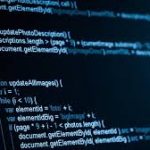In the last article we described the concept of an event-driven backtester. The remainder of this series of articles will concentrate on each of the separate class hierarchies that make up the overall system. In this article we will consider Events and how they can be used to communicate information between objects.
As discussed in the previous article the trading system utilises two while loops – an outer and an inner. The inner while loop handles capture of events from an in-memory queue, which are then routed to the appropriate component for subsequent action. In this infrastucture there are four types of events:
- MarketEvent – This is triggered when the outer while loop begins a new “heartbeat”. It occurs when the DataHandler object receives a new update of market data for any symbols which are currently being tracked. It is used to trigger the Strategy object generating new trading signals. The event object simply contains an identification that it is a market event, with no other structure.
- SignalEvent – The Strategy object utilises market data to create new SignalEvents. The SignalEvent contains a ticker symbol, a timestamp for when it was generated and a direction (long or short). The SignalEvents are utilised by the Portfolio object as advice for how to trade.
- OrderEvent – When a Portfolio object receives SignalEvents it assesses them in the wider context of the portfolio, in terms of risk and position sizing. This ultimately leads to OrderEvents that will be sent to an ExecutionHandler.
- FillEvent – When an ExecutionHandler receives an OrderEvent it must transact the order. Once an order has been transacted it generates a FillEvent, which describes the cost of purchase or sale as well as the transaction costs, such as fees or slippage.
The parent class is called Event. It is a base class and does not provide any functionality or specific interface. In later implementations the Event objects will likely develop greater complexity and thus we are future-proofing the design of such systems by creating a class hierarchy.
# event.py
class Event(object):
"""
Event is base class providing an interface for all subsequent
(inherited) events, that will trigger further events in the
trading infrastructure.
"""
pass
The MarketEvent inherits from Event and provides little more than a self-identification that it is a ‘MARKET’ type event.
# event.py
class MarketEvent(Event):
"""
Handles the event of receiving a new market update with
corresponding bars.
"""
def __init__(self):
"""
Initialises the MarketEvent.
"""
self.type = 'MARKET'
A SignalEvent requires a ticker symbol, a timestamp for generation and a direction in order to advise a Portfolio object.
# event.py
class SignalEvent(Event):
"""
Handles the event of sending a Signal from a Strategy object.
This is received by a Portfolio object and acted upon.
"""
def __init__(self, symbol, datetime, signal_type):
"""
Initialises the SignalEvent.
Parameters:
symbol - The ticker symbol, e.g. 'GOOG'.
datetime - The timestamp at which the signal was generated.
signal_type - 'LONG' or 'SHORT'.
"""
self.type = 'SIGNAL'
self.symbol = symbol
self.datetime = datetime
self.signal_type = signal_type
The OrderEvent is slightly more complex than a SignalEvent since it contains a quantity field in addition to the aforementioned properties of SignalEvent. The quantity is determined by the Portfolio constraints. In addition the OrderEvent has a print_order() method, used to output the information to the console if necessary.
# event.py
class OrderEvent(Event):
"""
Handles the event of sending an Order to an execution system.
The order contains a symbol (e.g. GOOG), a type (market or limit),
quantity and a direction.
"""
def __init__(self, symbol, order_type, quantity, direction):
"""
Initialises the order type, setting whether it is
a Market order ('MKT') or Limit order ('LMT'), has
a quantity (integral) and its direction ('BUY' or
'SELL').
Parameters:
symbol - The instrument to trade.
order_type - 'MKT' or 'LMT' for Market or Limit.
quantity - Non-negative integer for quantity.
direction - 'BUY' or 'SELL' for long or short.
"""
self.type = 'ORDER'
self.symbol = symbol
self.order_type = order_type
self.quantity = quantity
self.direction = direction
def print_order(self):
"""
Outputs the values within the Order.
"""
print "Order: Symbol=%s, Type=%s, Quantity=%s, Direction=%s" % \
(self.symbol, self.order_type, self.quantity, self.direction)
The FillEvent is the Event with the greatest complexity. It contains a timestamp for when an order was filled, the symbol of the order and the exchange it was executed on, the quantity of shares transacted, the actual price of the purchase and the commission incurred.
The commission is calculated using the Interactive Brokers commissions. For US API orders this commission is 1.30 USD minimum per order, with a flat rate of either 0.013 USD or 0.08 USD per share depending upon whether the trade size is below or above 500 units of stock.
# event.py
class FillEvent(Event):
"""
Encapsulates the notion of a Filled Order, as returned
from a brokerage. Stores the quantity of an instrument
actually filled and at what price. In addition, stores
the commission of the trade from the brokerage.
"""
def __init__(self, timeindex, symbol, exchange, quantity,
direction, fill_cost, commission=None):
"""
Initialises the FillEvent object. Sets the symbol, exchange,
quantity, direction, cost of fill and an optional
commission.
If commission is not provided, the Fill object will
calculate it based on the trade size and Interactive
Brokers fees.
Parameters:
timeindex - The bar-resolution when the order was filled.
symbol - The instrument which was filled.
exchange - The exchange where the order was filled.
quantity - The filled quantity.
direction - The direction of fill ('BUY' or 'SELL')
fill_cost - The holdings value in dollars.
commission - An optional commission sent from IB.
"""
self.type = 'FILL'
self.timeindex = timeindex
self.symbol = symbol
self.exchange = exchange
self.quantity = quantity
self.direction = direction
self.fill_cost = fill_cost
# Calculate commission
if commission is None:
self.commission = self.calculate_ib_commission()
else:
self.commission = commission
def calculate_ib_commission(self):
"""
Calculates the fees of trading based on an Interactive
Brokers fee structure for API, in USD.
This does not include exchange or ECN fees.
Based on "US API Directed Orders":
https://www.interactivebrokers.com/en/index.php?f=commission&p=stocks2
"""
full_cost = 1.3
if self.quantity <= 500:
full_cost = max(1.3, 0.013 * self.quantity)
else: # Greater than 500
full_cost = max(1.3, 0.008 * self.quantity)
full_cost = min(full_cost, 0.5 / 100.0 * self.quantity * self.fill_cost)
return full_cost
In the next article of the series we are going to consider how to develop a market DataHandler class hierarchy that allows both historic backtesting and live trading, via the same class interface.




